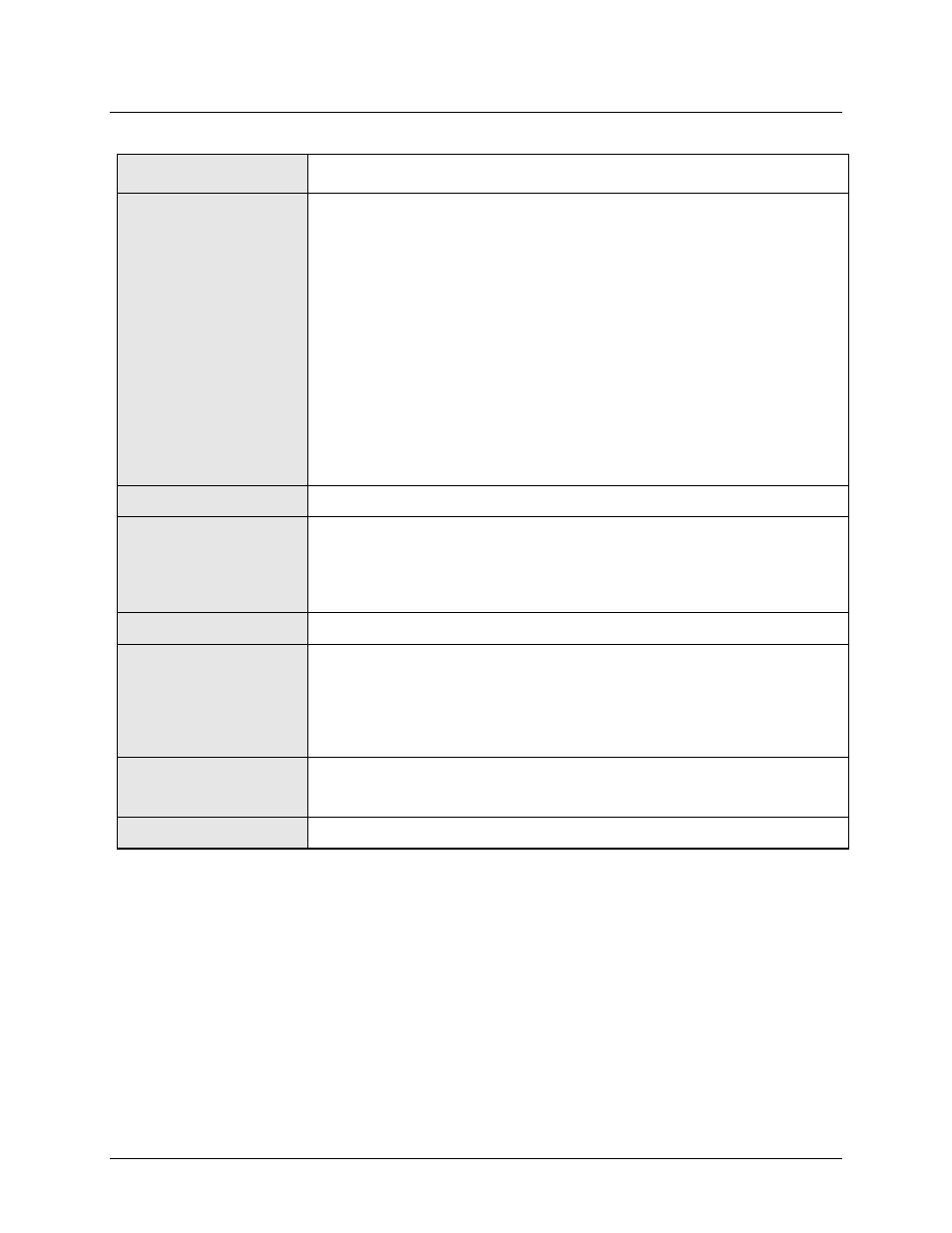F.5 doubletalk carrier-in-carrier specifications – Comtech EF Data CDM-625A User Manual
Page 634

CDM-625A Advanced Satellite Modem
MN-CDM625A
Appendix F
Revision 3
F–28
F.5 DoubleTalk Carrier-in-Carrier Specifications
Operating Mode
Requires the two links to share a common carrier frequency (Outbound and Inbound symbol
rates do not have to be equal)
Power Spectral Density Ratio
and CnC Ratio
BSPK/QPSK/8-PSK/8-QAM: –7 dB to +11 dB (ratio of power spectral density, outbound
interferer to desired inbound)
16-QAM: –7 dB to +7 dB (ratio of power spectral density, outbound interferer to desired
inbound)
Note: With asymmetric carriers the absolute power ratio (or CnC ratio) would be different,
depending on the ratio of the symbol rates.
Example:
•
Outbound interferer = 1 Msymbols/sec
•
Desired Inbound = 500 ksymbols/sec
•
Ratio of power spectral density = +7 dB
Absolute power ratio (CnC Ratio) = +7dB + (10 log Outbound/desired symbol rate) = +10 dB
Maximum Symbol Rate Ratio 3:1 (TX:RX or RX:TX)
Inbound/Outbound
frequency uncertainty
Within the normal acquisition range of the demod, as follows:
•
Below 64 ksymbols/sec: ±1 to ±(Rs/2) kHz, where Rs = symbol rate in ksymbols/sec
•
Between 64 and 389 ksymbols/sec: ± 1up to a maximum of ± 32kHz
•
Above 389 ksymbols/sec: ±1 to ± (0.1Rs) kHz, up to a maximum of ± 200 kHz
Delay range
0-330 ms
Eb/No Degradation
(equal Inbound/Outbound
power spectral density)
•
BPSK = 0.3dB
•
QPSK = 0.3dB
•
OQPSK = 0.3dB
•
8-PSK = 0.5dB
•
8-QAM = 0.4dB
•
16-QAM = 0.6dB
For +10 dB power spectral density ratio (outbound interferer 10 dB higher than desired
inbound) add an additional 0.3 dB
Monitor Functions
•
Delay, in milliseconds
•
Frequency offset (between outbound interferer and desired inbound). 100 Hz resolution
•
CnC ratio, in dB (ratio of absolute power, outbound interferer to desired inbound)
CnC Monitor Accuracy
±0.2 dB for symmetric symbol rate